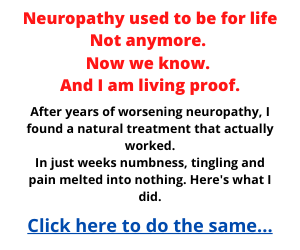How to reduce the Risk of Heart Attack after being diagnosed as Diabetic
How to reduce the Risk of Heart Attack after being diagnosed as Diabetic
As a result, you've been diagnosed with diabetes. After the first shock has worn off, you'll have to live with the resulting alterations in your way of life.
There's a better way to look at life if you know that this isn't the end but just the start of something new.
There are no more days when you felt like garbage and didn't know where the problem came from. People often feel relieved when they finally figure out what the problem is, which can make them happy.
YOU NEED TO TAKE CARE OF YOUR HEART AS A DIABETIC
There is less stress because they know their life is now on a straight path. A little. As you start a new life, you'll have to make a few changes. The first thing your doctor should have done is put you on a new meal plan.
Over time, the elevated glucose levels in your blood cause the blood vessels in your body to thicken, preventing the flow of oxygen-rich blood through them.
When blood flow is impeded, the heart needs to work harder to pump the blood into the veins, just like an electric water pump.
This is called blood pressure in your
body and that means – the high blood pressure.
People with diabetes have high blood pressure, which can cause other problems. For a while, this can cause you to have high blood pressure and other problems, but over time, the vessels in your body become thicker and thicker, so your heart can't pump blood through them and you have a heart attack.
This is called sudden cardiac arrest
also.
So you know now that how your diabetes
can lead you to make the cardiac arrest situation.
You need to take some sure
steps to prevent your blood vessels being thick with the extra glucose effect
in your blood.
Here are following suggestions
for that
Insulin injections may be required if you have either Type I or Type 2 diabetes.
Relax, things are going to get only
better now that your health is being managed correctly.
Your new diet will include a lot of low-carb foods, which can be a pain if you're a big fan of savory foods. As long as your quality of life goes up immeasurably, there's no reason not to do it, right?
All of your favorite foods may be enjoyed on a low-carb diet if you just keep an eye on your intake. Maintaining a healthy diet necessitates moderation and a constant awareness of what you're putting into your body.
Here are some other lifestyle modifications that can optimize blood flow:
1. Quit smoking: Smoking is a
risk factor for many chronic diseases — such as cancer — and can
negatively impact circulation
2. Increase physical activity: Exercise
stimulates blood flow and helps improve vasodilation. Plus, regular exercise decreases your risk of heart
disease
3. Lose weight: Being
overweight or obese negatively impacts blood flow and can lead to
dangerous complications, such as plaque build-up in your arteries
4. Follow a healthy diet: Instead of
simply stocking up on particular foods, try switching to a diet rich in
healthy, whole foods — such as vegetables, healthy fats and fibre-rich foods —
which can improve circulatory health.
5. Stay hydrated: Proper hydration
I critical to all aspects of health, including circulation. Dehydration
can damage endothelial cells and promote inflammation in your body, restricting
blood flow
6. Reduce stress: Research proves that stress levels
can significantly impact blood pressure.
Through yoga, meditation, gardening or spending time in nature
Having to deal with the sickness for some time will make you an expert at self-care. Protein-rich foods like meats and nuts will be your best friends because they have low carbohydrate content.
This isn’t to say that you should go on a
“no carb” diet, management and moderation is the key.
All in all, you should stay in touch with your doctor and nutritionist while you are still in the early stages of the disease. As you start a new life, they'll be there for you.
More of this you can add
following 16 foods to your daily life those
are sure to promote your blood circulation and easy blood flow.
Add above foods in your daily food and make a habit to live longer
heart life and control your diabetes also.
CHECK ABOVE TO SEE A VIDEO PRESENTATION how you can get rid of
your diabetes by some simple remedies.
watch this VIDEO to know more
 Reviewed by Diabetes Truths and Control
on
1:17 PM
Rating:
Reviewed by Diabetes Truths and Control
on
1:17 PM
Rating:





















